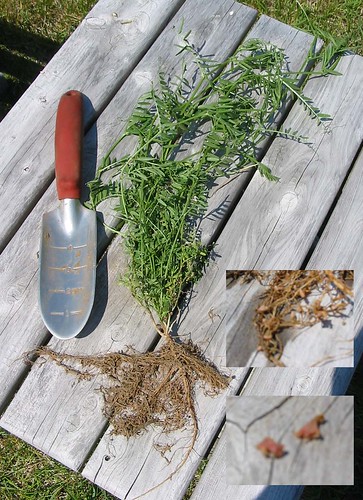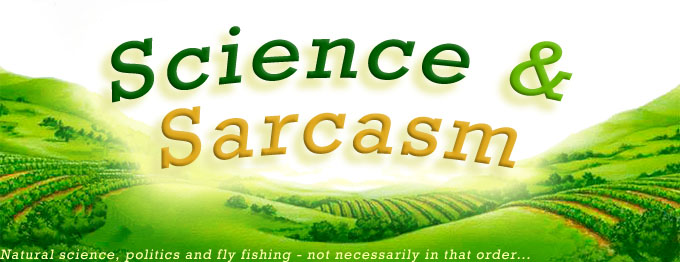21 May 2005
"Free Nitrogen" by Harry Vetch...

Before rototilling a new section of my vegetable garden for planting, I dug up a hairy vetch [Vicia villosa Roth] plant to look at the roots and assess its nitrogen fixation status. I've got common hairy vetch growing in rotation with vegetables as a source of organic nitrogen for my garden. Since hairy vetch is a legume, it can add N to the soil through biological nitrogen fixation. I found that the vetch plants had LOTS of nitrogen-fixing nodules on the roots (see picture inset). The nodules develop in order to host symbiotic bacteria (Rhizobium leguminosarium in this case). The bacteria get a nice place to live and the legume gets free N. It is a good practice to inoculate legume seed with the proper bacteria prior to planting to ensure sufficient organism numbers for N fixation. I've never inoculated my garden or my seed, but it appears the bugs are present in sufficient numbers anyway.
These nodules were numerous and were pinkish-red inside (see second picture inset). The pink color indicates the presence of leghemoglobin, a pigment associated with effective nodulation and N fixation. Nodules can also be greenish in color; but a green color indicates no biological fixation of N. So, I'm getting free N from the atmosphere into my garden soil via the many pink nodules. This reduces or eliminates the need for other N fertilizers. It's also a more slowly-available form of N compared with synthetic fertilizer. Many organic, sustainable agricultural production systems depend on natural nitrogen sources such as this.
The Fly Fishing Loop is sponsored by flydepot.com
[ Home Waters | Next | Random | List | Search ]

This work is licensed under a Creative Commons Attribution-NonCommercial-ShareAlike 2.5 License.





